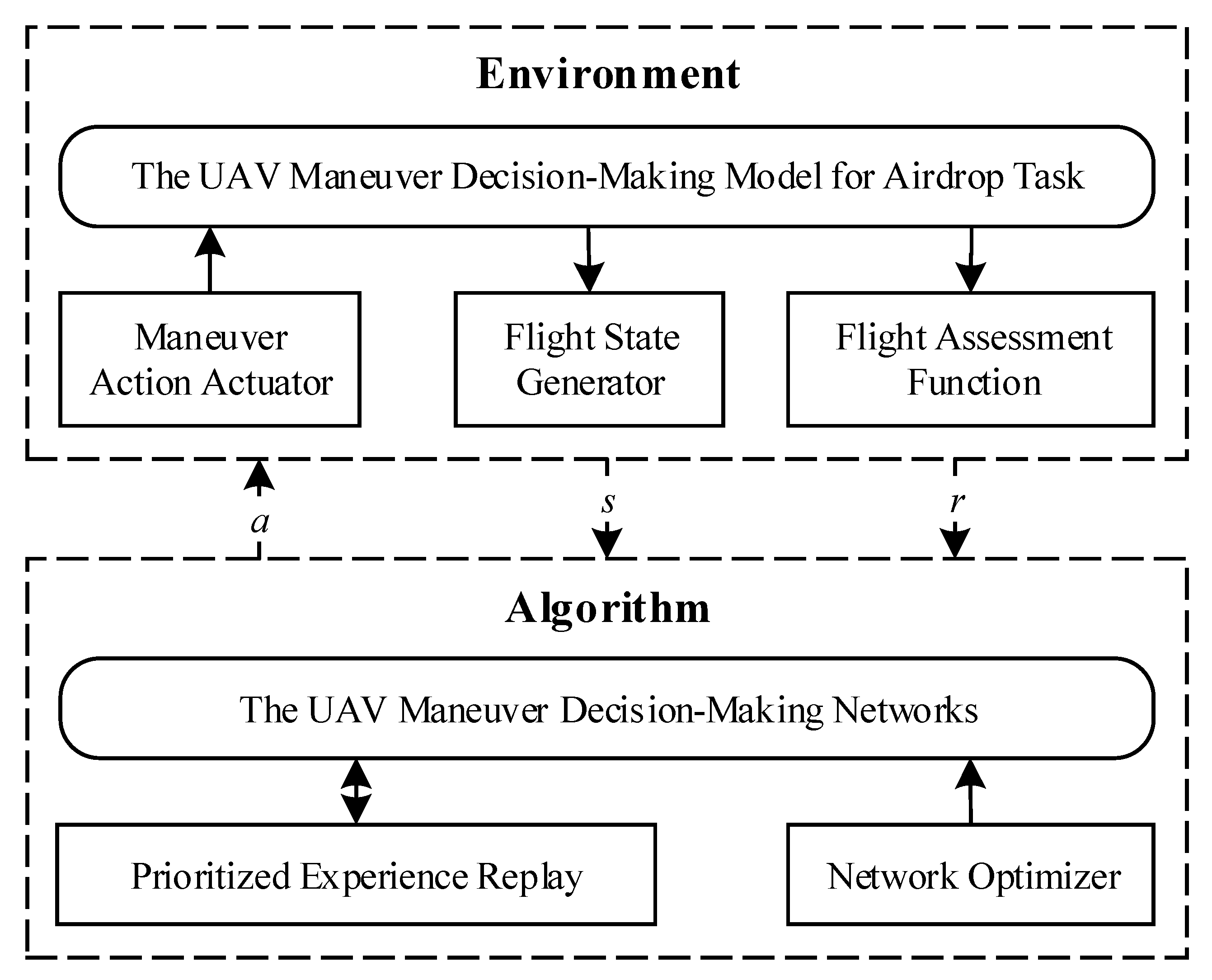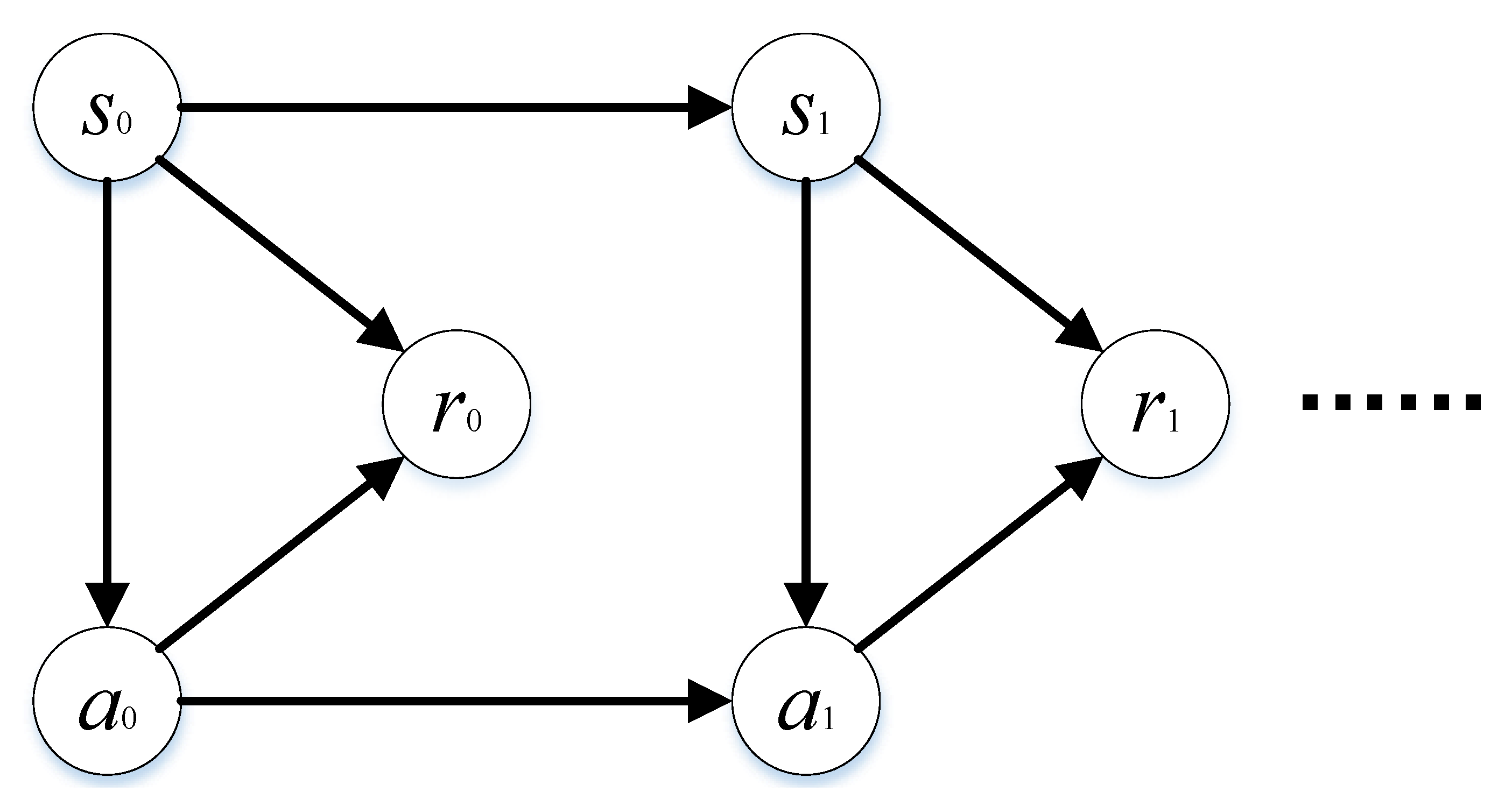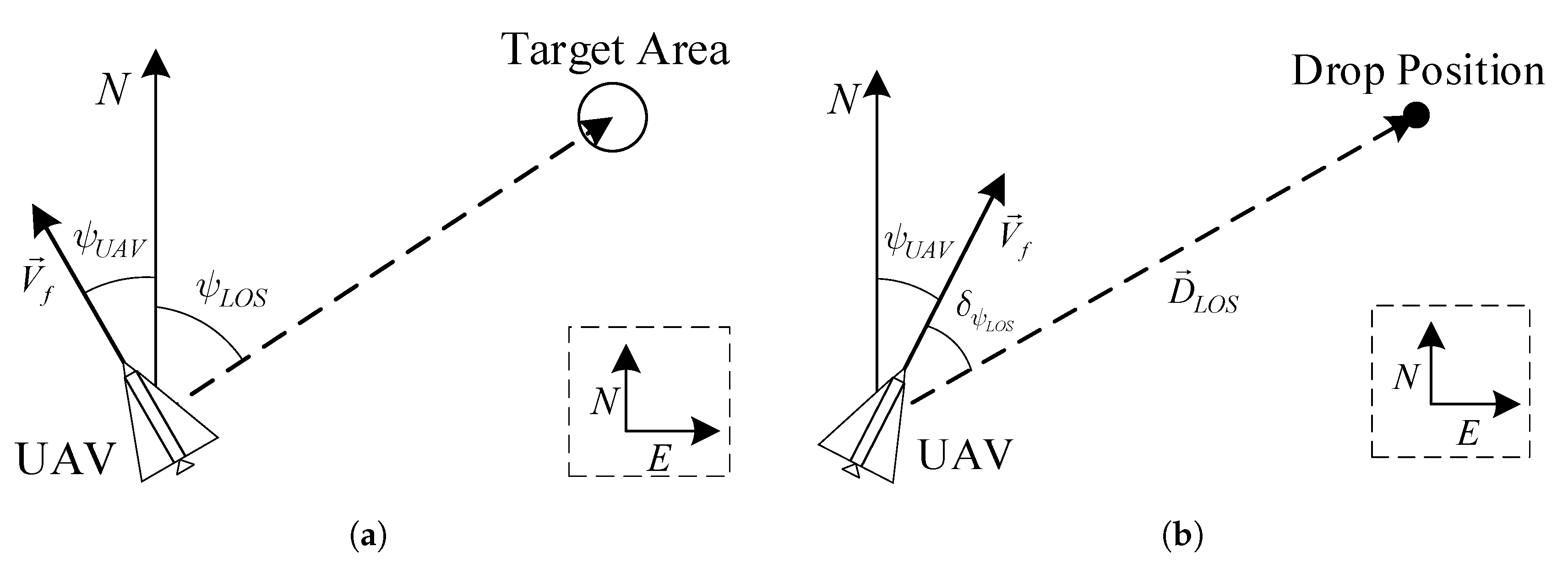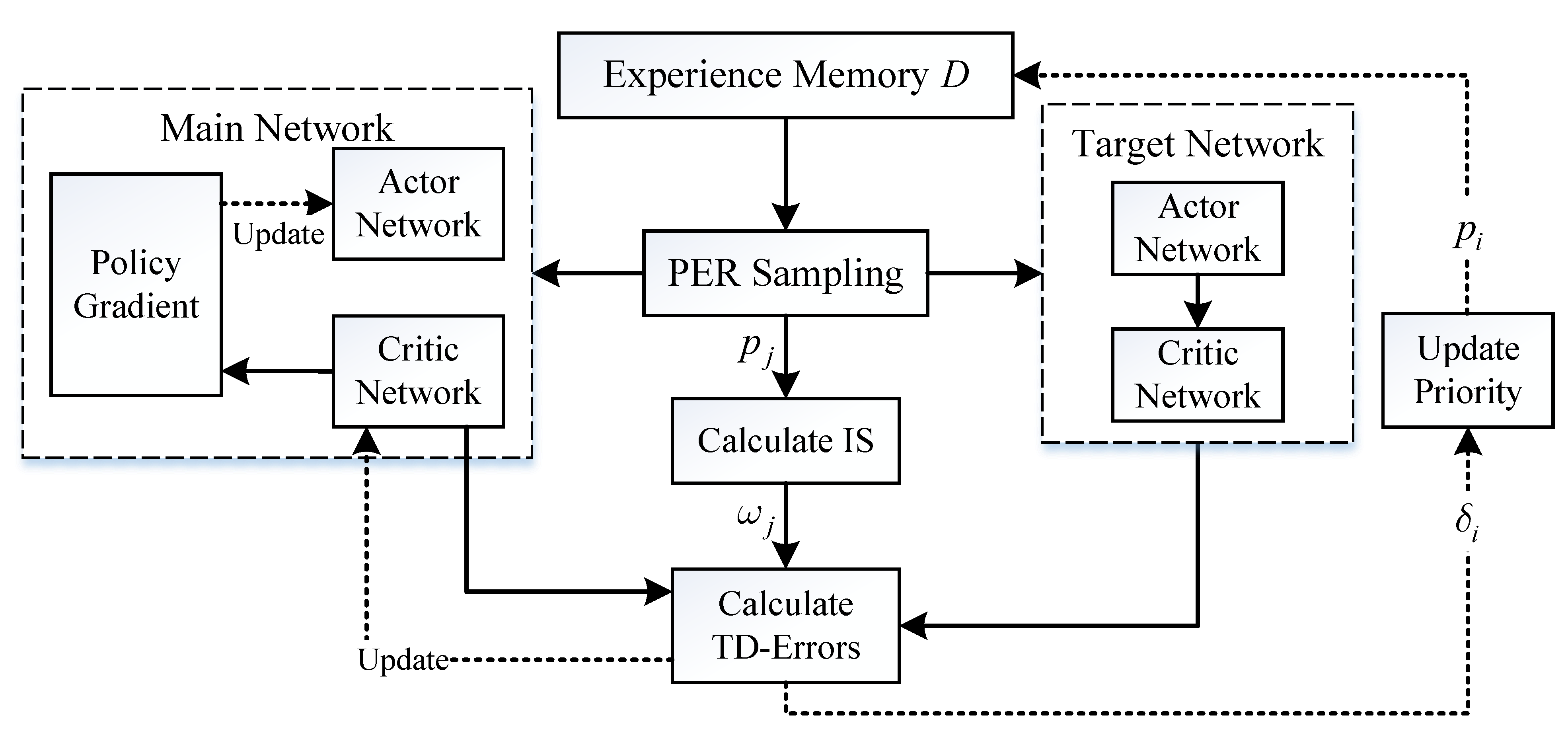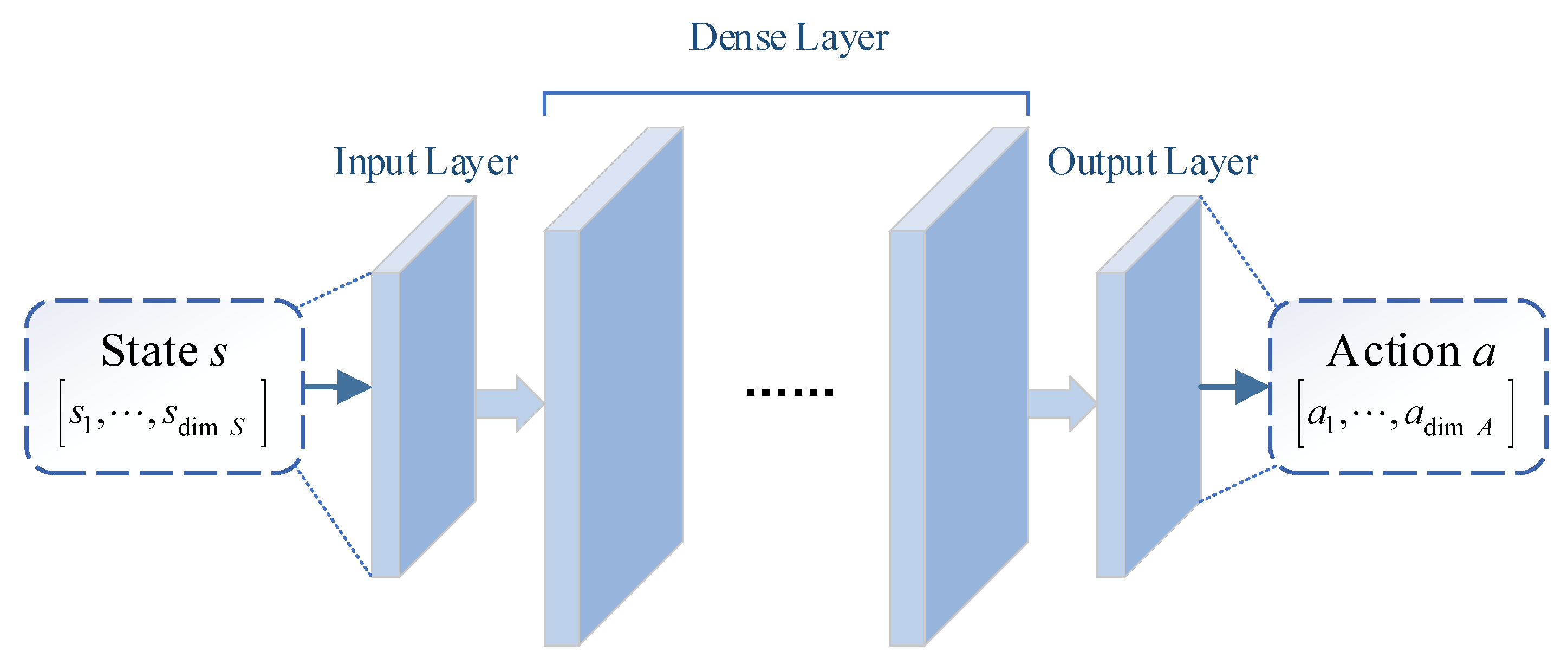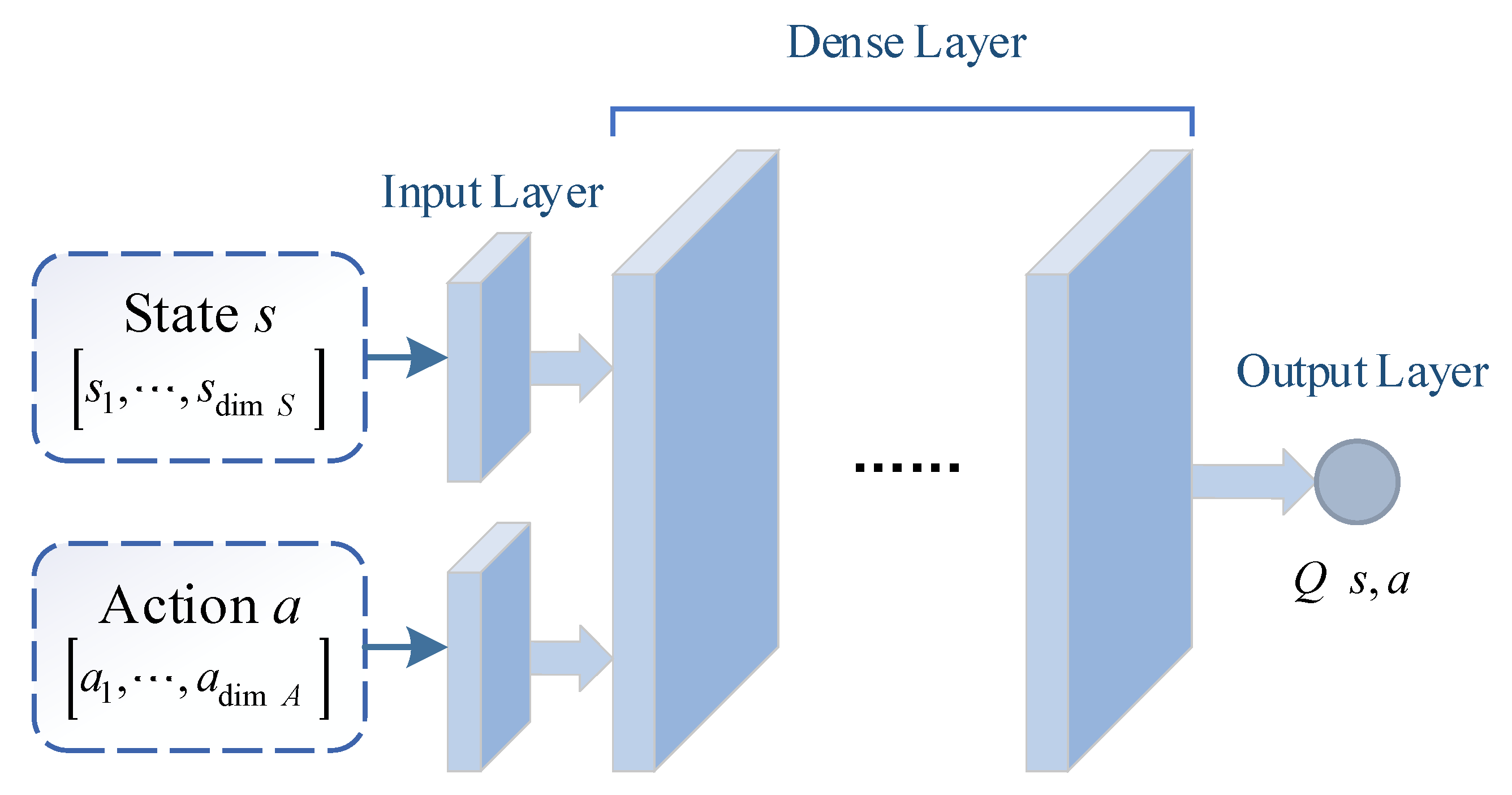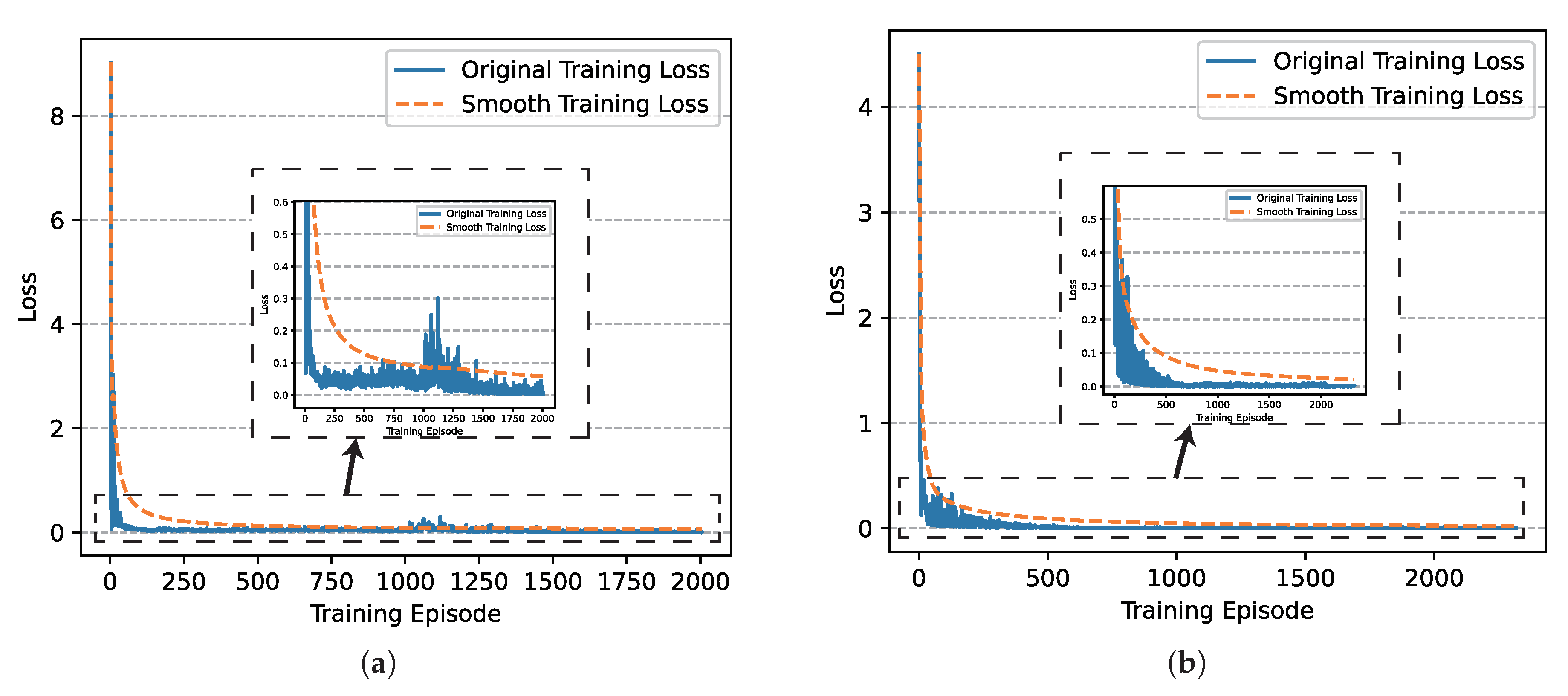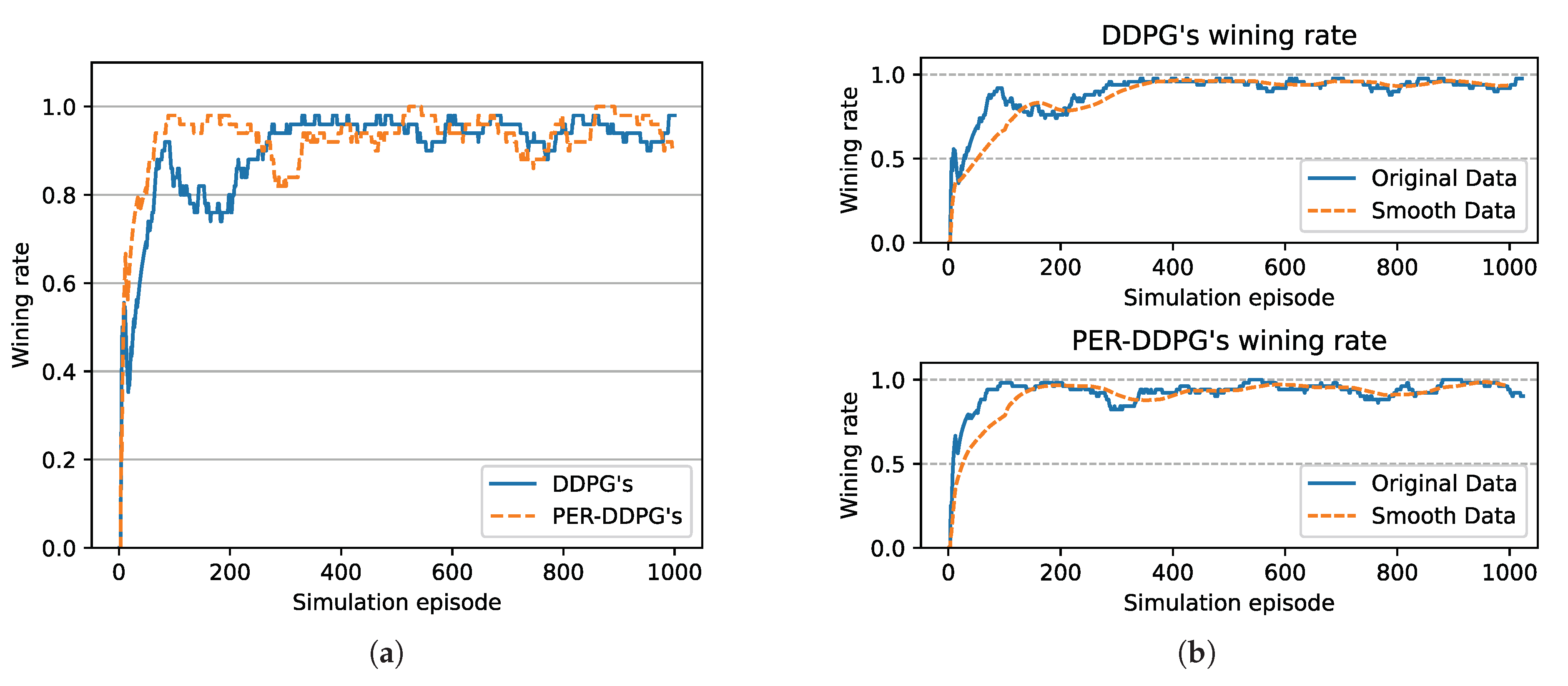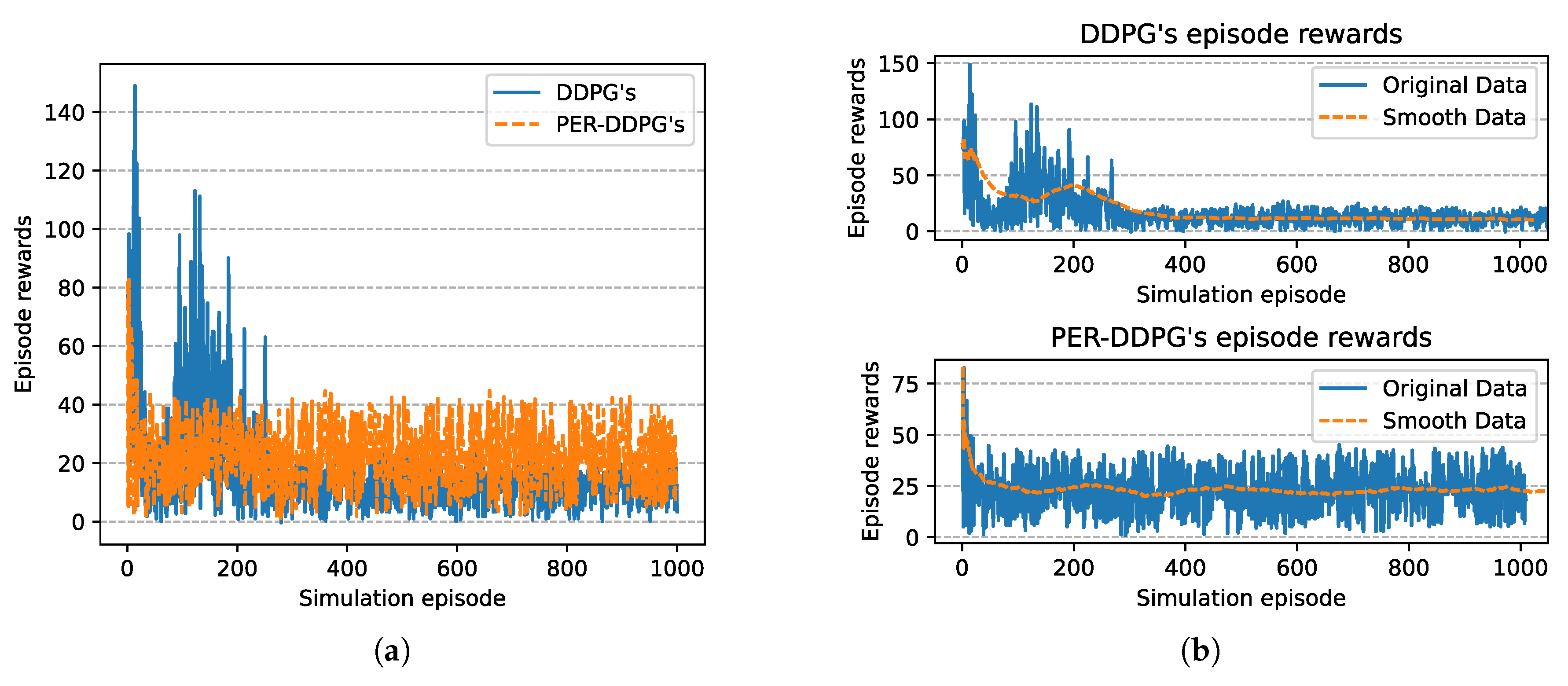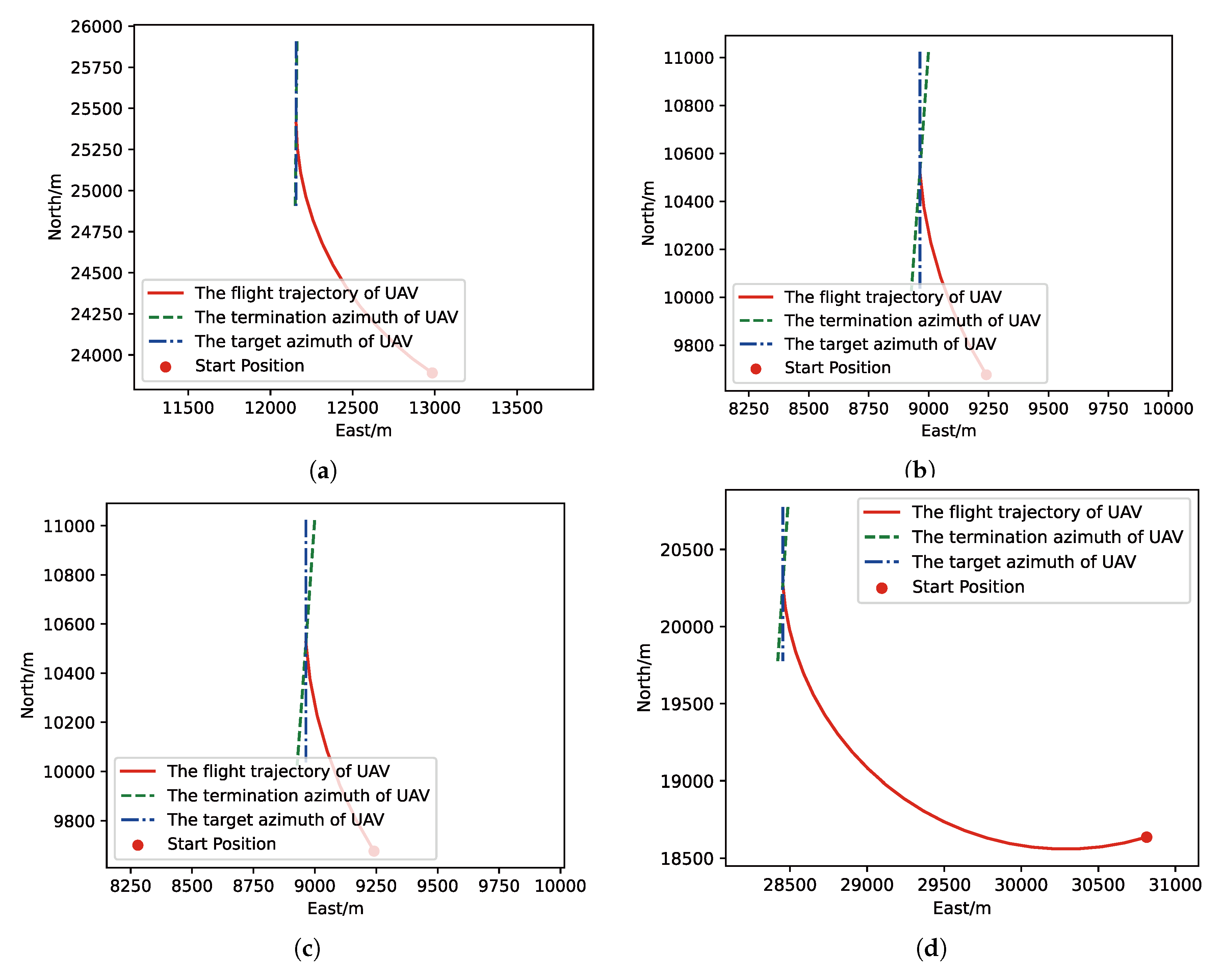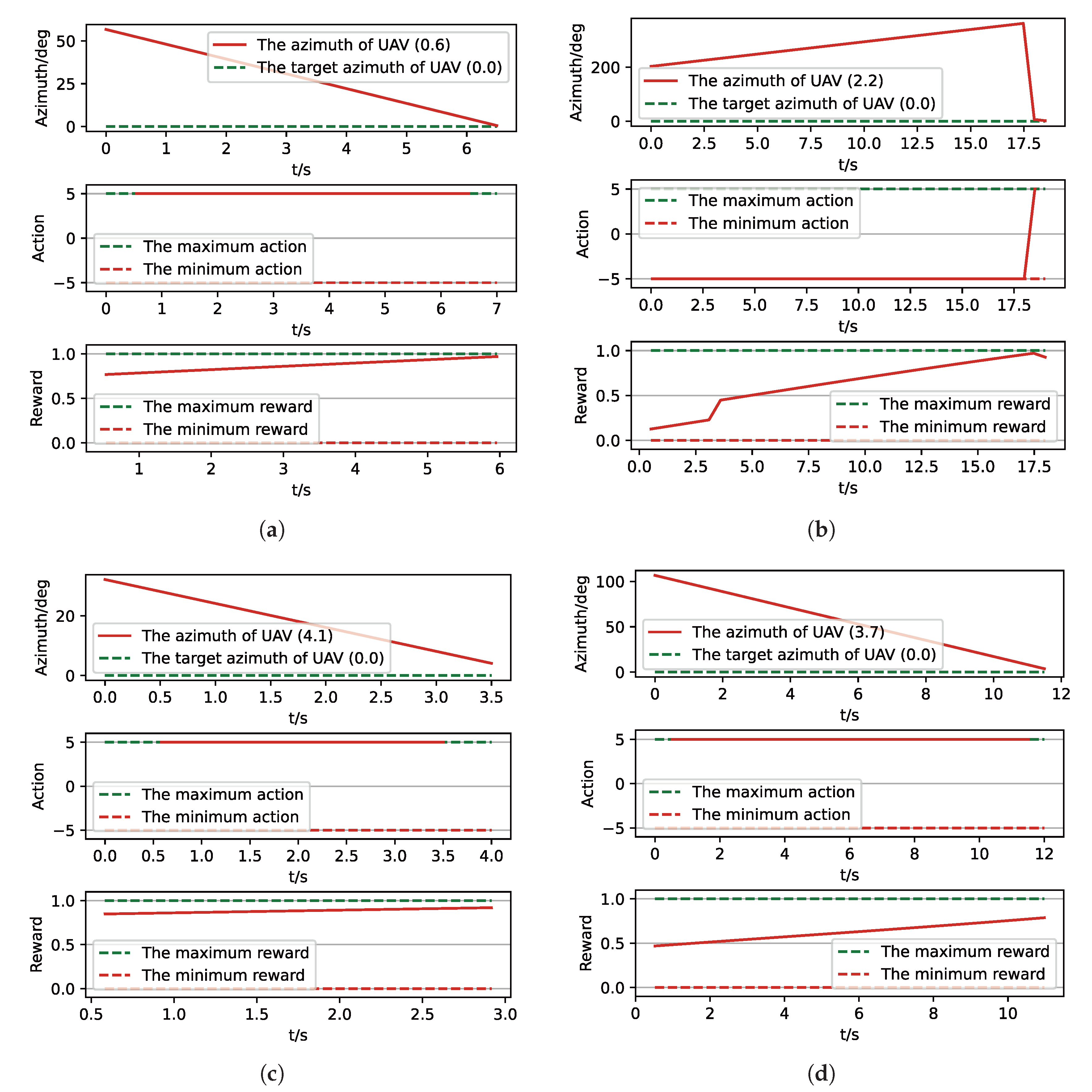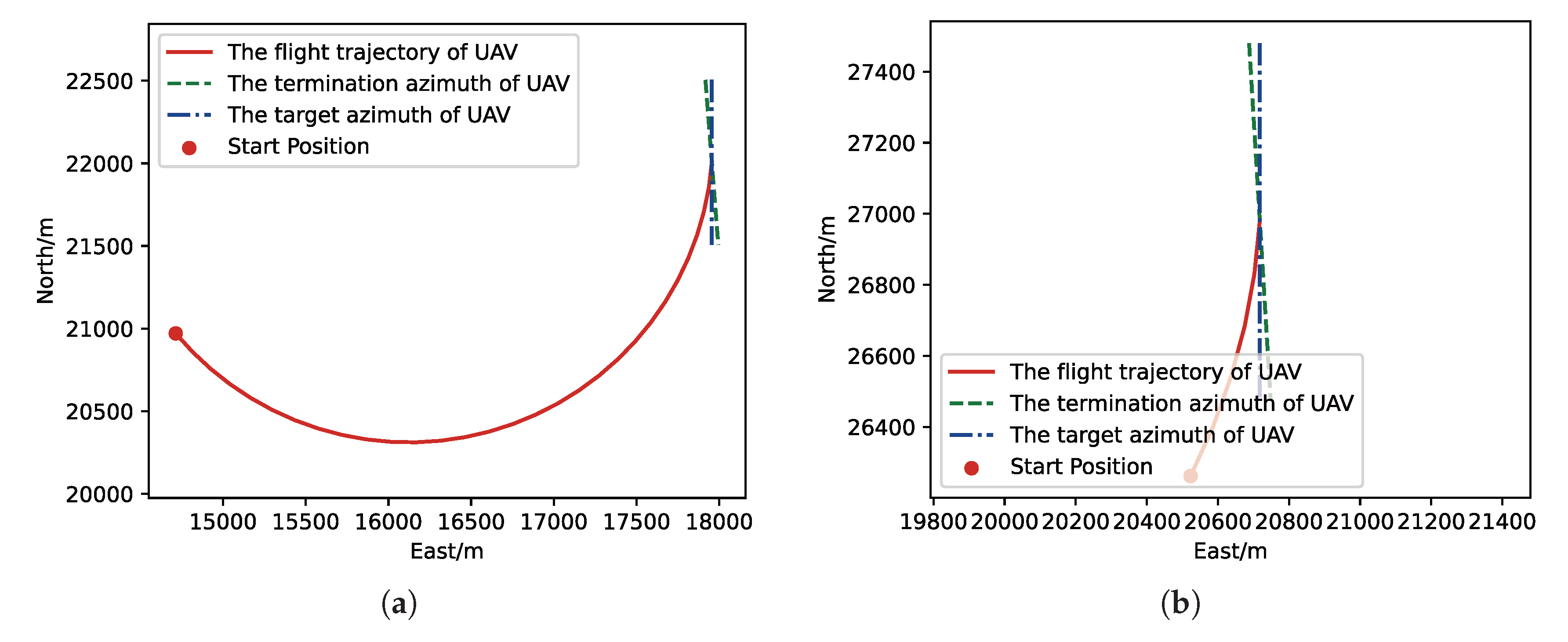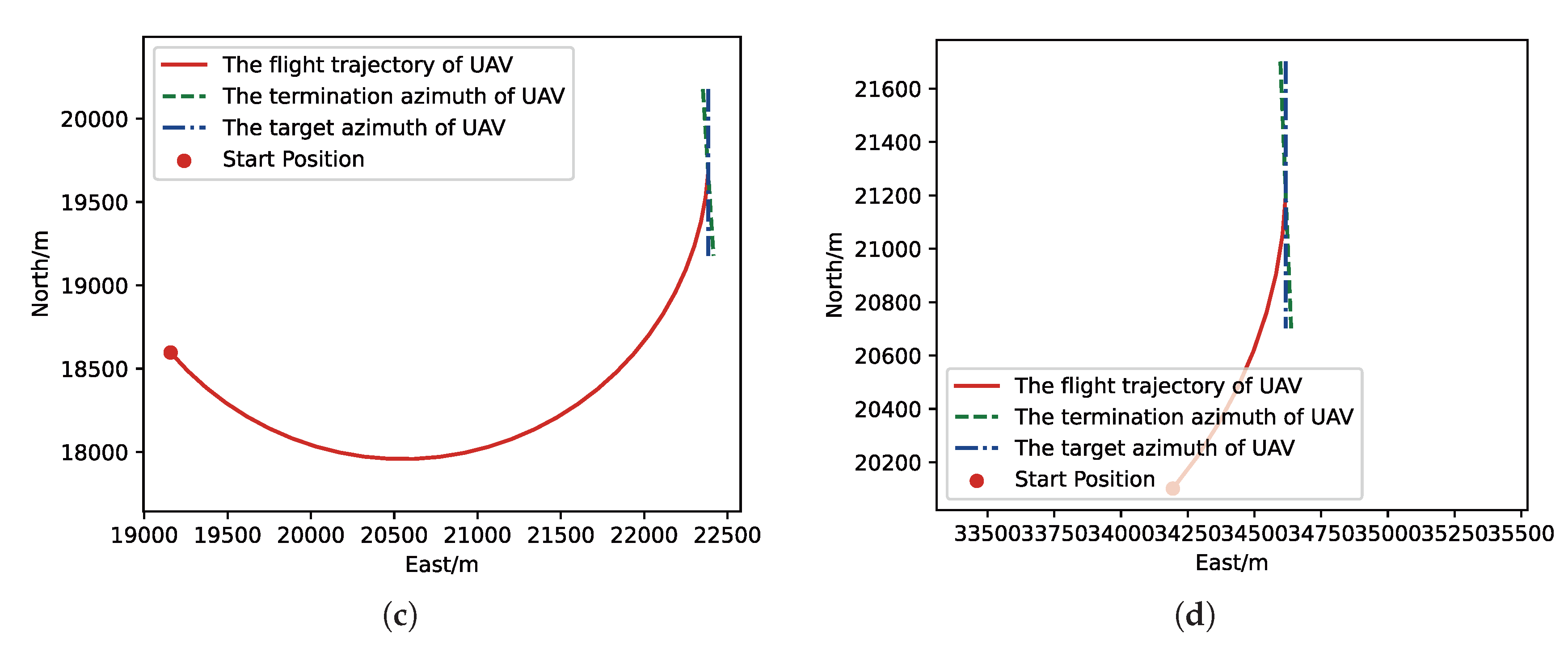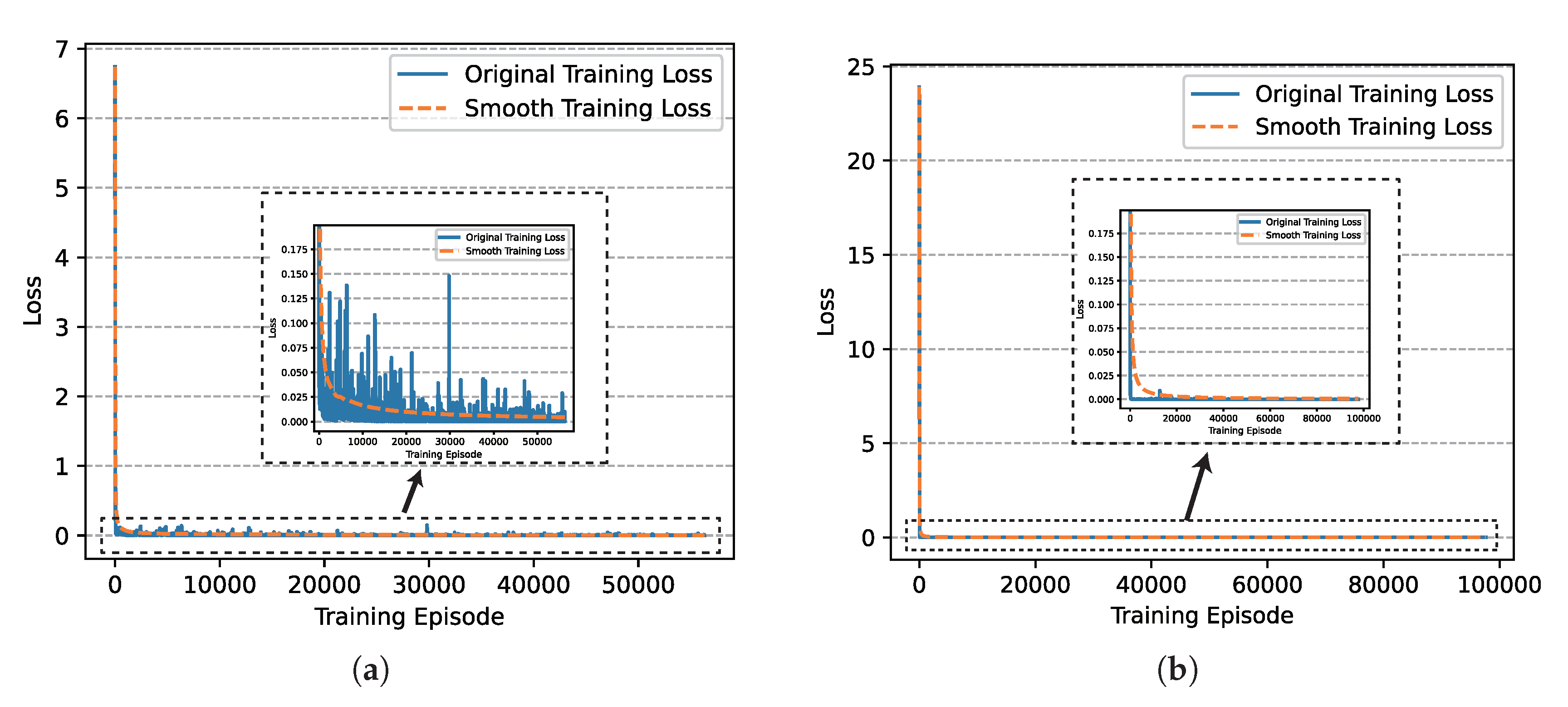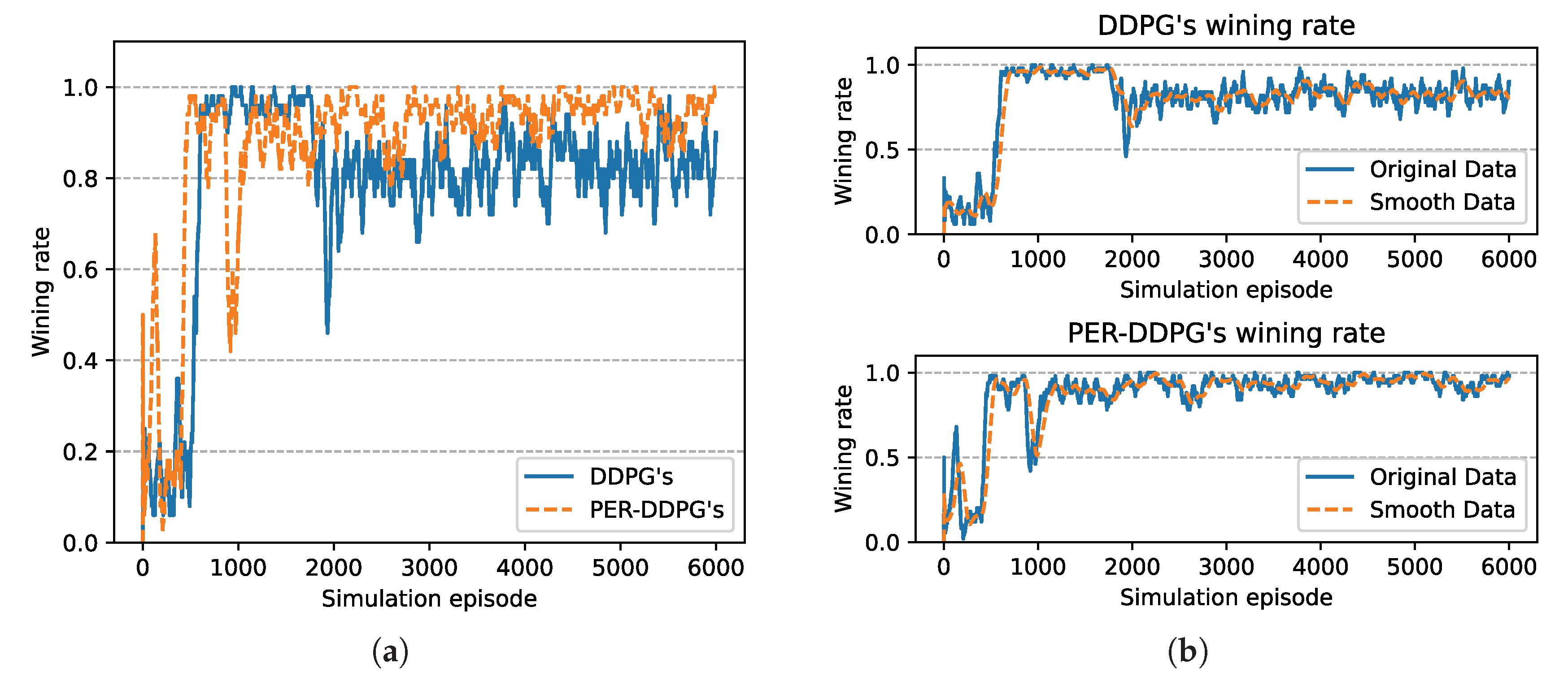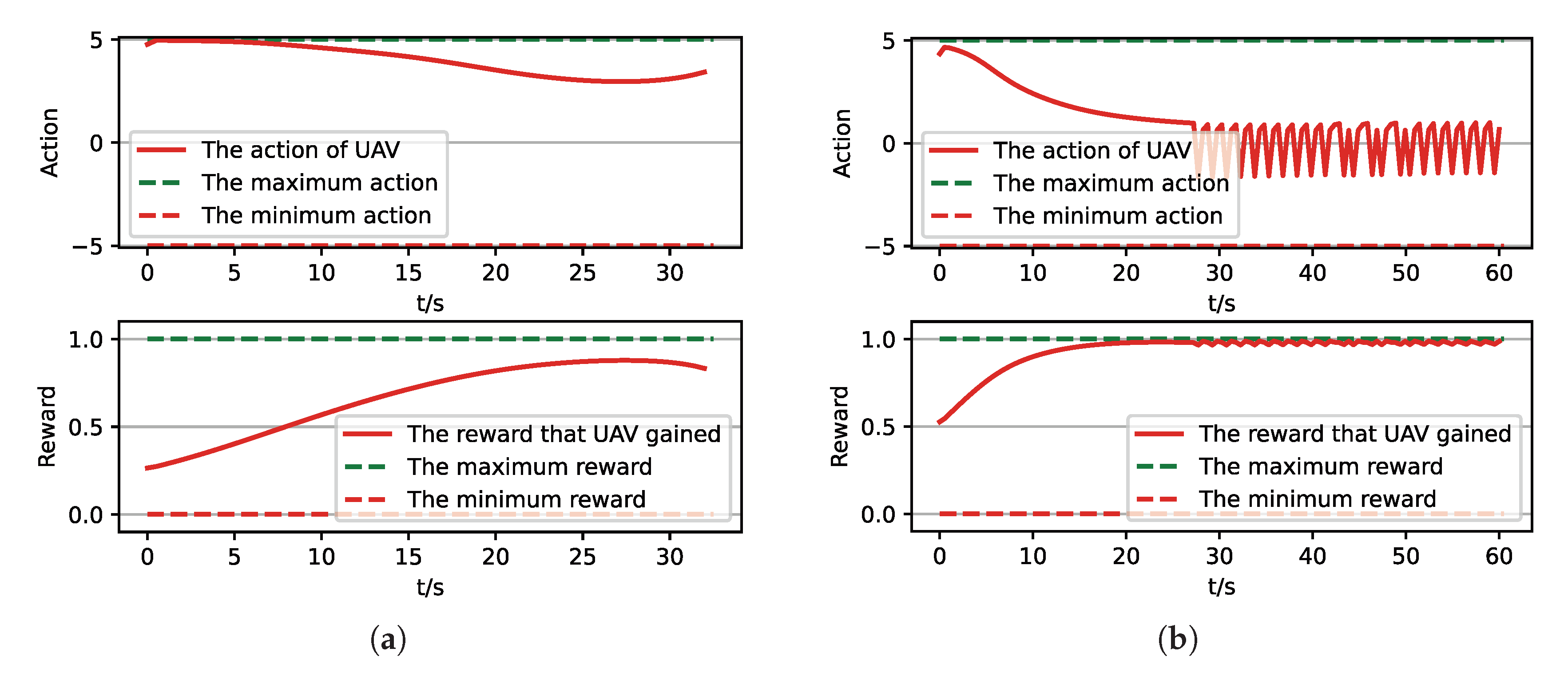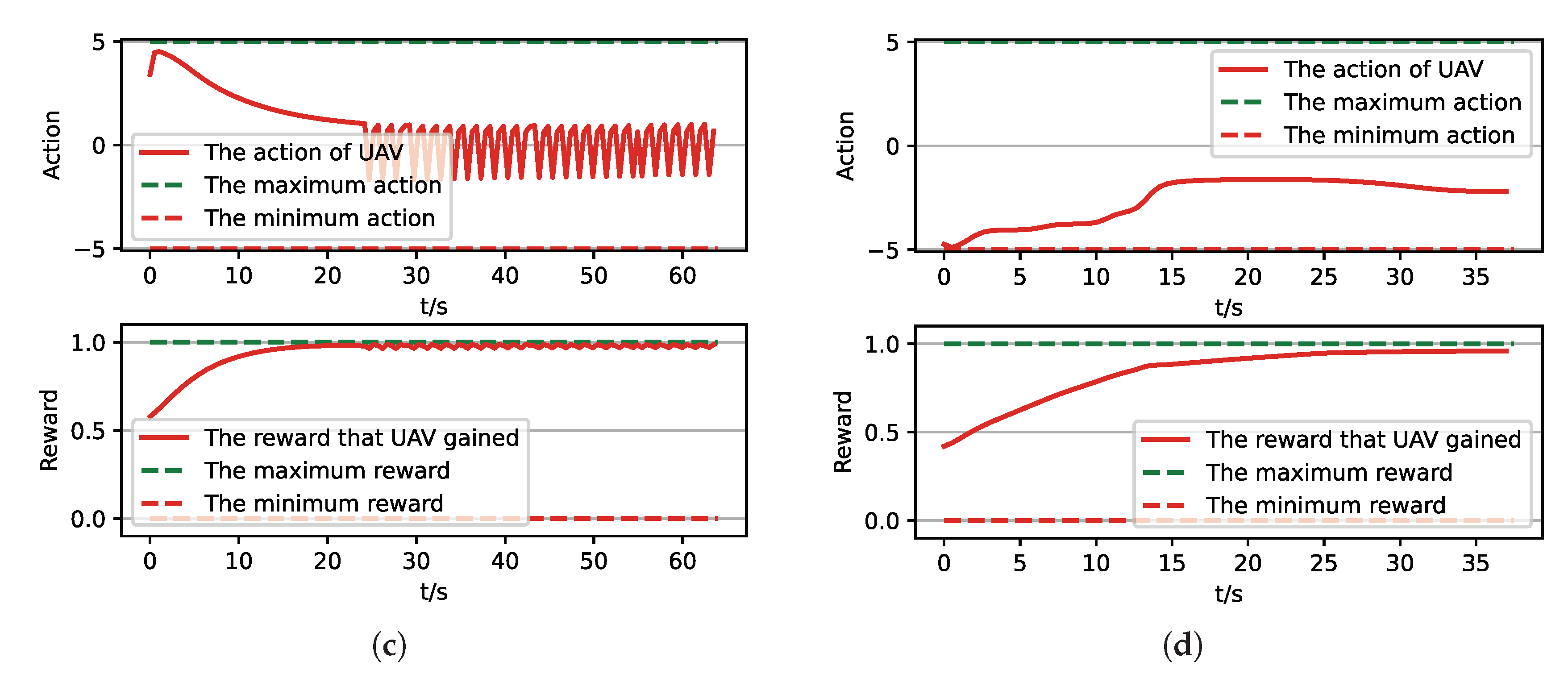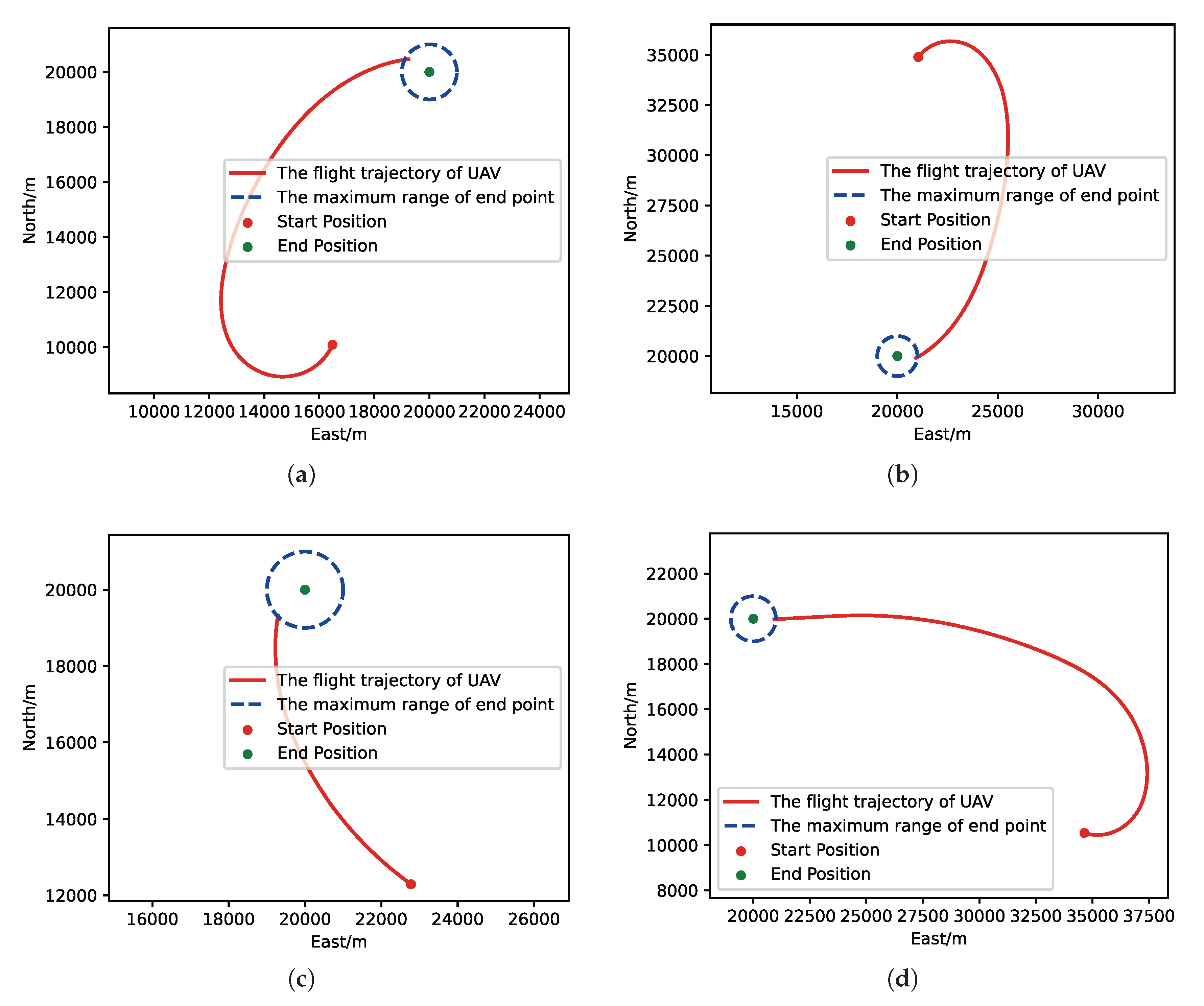2.2.1. The Framework of Per-DDPG
The Deep Deterministic Policy Gradient (DDPG) is a model-free, off-policy, and DRL-based algorithm based on Actor-Critic architecture. It can effectively solve problems belonging to MDPs with continuous state space and action space.
Although DDPG can avoid the dimensional explosion problem brought by continuous state space and action space, it does not consider the diversity of data and does not utilize historical experience fully. This results in the low convergence speed of DDPG’s policy and poor stability of the convergence result. Meanwhile, because the episode of UAV maneuver decision-making is short, while the task process lasts a long time, the changing of reward is not obvious. Thus, the value density of historical experience is low. That is the reason why we use PER to generate training data [
17], which can improve the utilization of the potential value of historical experiences, thereby increasing convergence speed and enhancing the stability of training results.
Figure 4 shows the block diagram of the PER-DDPG’s structure. At each decision-making step, the actor network outputs action with noise for exploring according to state, and the current state, action, reward, and next state are packaged and stored in experience memory
D. During the process of storing experience, samples bind with probability used for PER sampling. And then, the training data is sampled from
D by PER, and every sampled data’s TD-error [
25] between current
and target value is calculated for updating the priority of data and being cumulated for updating network’s parameters with importance sampling (IS) weights. Finally, the parameters of main networks
and
are updated, and the parameters of target networks
and
are also updated smoothly because of stability of network training.
At each moment, the algorithm gives action by
where
is the current state, and
is the resulting output by the actor function
. During the training process, the critic function
evaluates current action given by actor function, and the evaluation is used for the basis of updating
.
2.2.2. The UAV Maneuver Decision-Making Network
As mentioned above, DDPG is a kind of deep reinforcement learning algorithm based on the Actor-Critic framework. During the training process, the actor network outputs action according to state generated by environment. Meanwhile, TD-error is used to optimize the critic network and update its parameters. Similarly, the actor network’s parameters are optimized according to . Therefore, we must design the structure of actor and critic networks, respectively, on the basis of DL.
(1) Actor Network
The actor network
is mainly used to output action in real-time decision according to state. The input vector of the network is the current state
, and the output vector of the network is the current action
calculated by
. Considering the definition of state space, the dimension of network input is
, and the dimension of output is
. As shown in
Figure 5, it is the normal structure of actor network
.
(2) Critic Network
The critic network
is used to evaluate the advantage of current action
output by
. The network input is
, and the network output is
. According to state space and action space defined above, the dimension of network input is
, and the dimension of network output is 1. As shown in
Figure 6, it is the normal structure of critic network
.
In addition, before state and action are entered into network, the value of input vector should be normalized for eliminating the influence of data’s physical meaning. Moreover, the structure of target networks and is similar to and , and only the method of parameters updating is distinguished.
2.2.3. The Training Procedure of UAV Maneuver Decision-Making Algorithm
Based on MDPs, the key issue of searching optimal UAV maneuver decision-making policy is to solve an optimization problem defined as
where
is defined in Equation (
3). In this paper, we use Double Q-Learning [
18] to update the
, as defined in Equation (
20).
In the equation above,
is current state,
is current action,
is current reward,
is next state, and
is the learning rate of the algorithm. As shown in Equation (
21), it is loss function
of critic network
.
The symbol
is TD-error based on Double Q-Learning of
j-th data sampling from memory
D. TD-error describes the difference between
and optimal goal, and it is defined as
where
is the optimal goal of
,
is
j-th training data, and
and
are current state and action in
, respectively. The symbol
could be calculated by
where
and
are current reward and next state in
. Thus, we can obtain the gradient of loss function
as shown below considering Equations (
21) and (
22).
At the same time, we define the loss function
of actor network
in order to update the parameters of
.
Thereby, we can obtain the gradient of
according to deterministic policy gradient theorem [
26], as shown in Equation (
26).
During the process of training networks, we use the PER method to sample training data from
D in order to utilize the diversity of experiences fully. Usually, the training data is sampled by selecting a batch of data from
D uniformly, which means the probability
of each sample selected in
D is equal. On the contrary,
of PER is not same, as defined as Equation (
27).
In the equation above,
is the priority of
i-th sample in
D, and
is a hyperparameter. When
, it is pure UER.
is defined based on TD-error, as shown in Equation (
28).
Among the equation above, is TD-error of i-th sample in D. Moreover, a minimum is introduced to prevent from being 0.
Although PER improves the availability of experiences, the distribution error of training data sampled by PER occurs compared with UER’s, and this problem also reduces the diversity of training samples. Therefore, importance sampling (IS) weights are introduced to correct the distribution error of training data caused by PER. The IS weight
is defined as Equation (
29).
In the equation above,
N is the size of
D. When
, the distribution error of training set is fully compensated. When
is calculated, the actual updating target is
and it’s used to replace
in Equation (
24). Therefore, the final gradient
of
is calculated by
In order to ensure the stable convergence of the network,
is normalized by
. Thereby, the actual IS weight
could be defined as
At the same time, in the early stage of training, the distribution error caused by PER is not big. Thus, we define an initial , and it gradually increases to 1 with training going on.
In addition, because of stability of target networks’ training, the parameters of
and
are updated by “Soft” updating similar to smooth updating, as shown in Equation (
32).
In the equation above, the symbol
is a hyperparameter involved in the “Soft” updating. Moreover, a kind of random noise is used to improve the exploration ability of deterministic policy involved in algorithm, as shown in Equation (
33).
Among the equation,
is a kind of time-variant noise. Because the UAV maneuver decision-making satisfies the Markovian condition and the changing of state is inertial process, an autocorrelation noise model called Ornstein Uhlenbeck (OU) process [
27] is used for action exploration. The iterative formula of
is shown in Equation (
34).
In the equation above, and are current and next value of noise separately. and indicate the mean value and regression rate of noise, respectively. Moreover, is the step of noise, and represents the Wiener process.
Finally, the training procedure of UAV maneuver decision-making algorithm is given in Algorithm 1.
| Algorithm 1 The UAV Maneuver Decision-Making Algorithm for Airdrop Task. |
Input: The hyperparameters of training networks: the size of minibatch k, networks’ learning rate ; The hyperparameters of updating policy: policy’s learning rate , learning period K, memory capacity N, “Soft” updating ; The hyperparameters of sampling: the availability exponent of PER , IS exponent ; The control parameters of simulation: maximum period M, maximum step per period T.
Output: Actor network and its target network ; Critic network and its target network .
- 1:
Initialize , and their target networks , . - 2:
for to M do - 3:
Reset environment and read the initial state . - 4:
Output according to Equation ( 18). - 5:
for to T do - 6:
Observe current state and reward of environment and calculate current action according to Equation ( 18). - 7:
Save current transition into experiences memory D. - 8:
if then - 9:
Reset the gradient of with IS. - 10:
for to k do - 11:
Sample traing data according to Equation ( 27) - 12:
Calculate IS weight according to Equation ( 31) - 13:
Calculate TD-error of training data according to Equation ( 22) and update its priority according to Equation ( 28) - 14:
Accumulate according to Equation ( 30). - 15:
end for - 16:
Update the parameters of according to with learning rate . - 17:
Update the parameters of according to Equation ( 26). - 18:
Update the parameters of target networks and according to Equation ( 32) - 19:
end if - 20:
end for - 21:
end for
|
